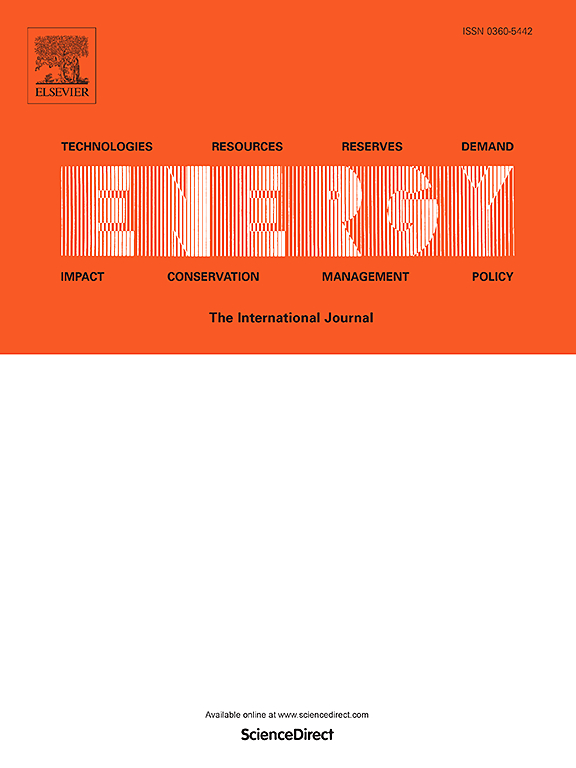Temperature-dependent multi-physical modeling strategy and safety optimization of lithium-ion battery under mechanical abuses
IF 9
1区 工程技术
Q1 ENERGY & FUELS
引用次数: 0
Abstract
Mechanical abuse risks remain a major concern in the widespread use of lithium-ion batteries (LIBs) in electric transportation. Extreme ambient temperatures in different service environments significantly affect the mechanical properties and failure behaviors of LIBs, posing safety challenges. This study investigates the failure process of lithium-ion pouch batteries under mechanical indentation leading to internal short circuit (ISC) at both low and high temperatures using a coupled mechanical-electrical-thermal model. By incorporating a temperature-dependent, strain-based failure criterion for the separator and heat generation models, the proposed framework accurately reproduces two experimentally observed failure behaviors across different temperatures. At low temperatures, electrical failure is characterized by minor voltage drops and limited heat generation due to localized separator cracking. In contrast, at higher temperatures, extensive internal fractures result in sharp voltage drops and significant heat buildup. The indentation-induced failure mechanisms, integrating mechanical deformation and ISC characteristics, are discussed. Additionally, parametric studies on the jellyroll and shell casing reveal that optimizing the yield strength, elastic modulus, and geometric thickness enhances LIB safety under mechanical indentation. However, a balance must be maintained among failure displacement, load-bearing capacity, and ISC severity at the onset of electrical failure. This modeling strategy offers a multi-physical approach to predicting and optimizing battery safety, providing valuable insights for improving LIB design across diverse environmental conditions.
力学损伤下锂离子电池温度依赖多物理建模策略及安全性优化
在电动交通中广泛使用锂离子电池(LIBs)时,机械滥用风险仍然是一个主要问题。在不同的使用环境下,极端环境温度会显著影响lib的力学性能和失效行为,对其安全性提出了挑战。本研究采用机械-电-热耦合模型研究了低温和高温下锂离子袋状电池在机械压痕导致内部短路(ISC)的失效过程。通过结合温度相关的、基于应变的分离器失效准则和热生成模型,所提出的框架准确地再现了在不同温度下实验观察到的两种失效行为。在低温下,电气故障的特点是电压下降很小,由于局部分离器开裂而产生的热量有限。相反,在较高的温度下,大量的内部断裂会导致电压急剧下降和明显的热量积聚。综合力学变形和ISC特性,讨论了压痕破坏机制。此外,对果冻和壳体的参数化研究表明,优化屈服强度、弹性模量和几何厚度可以提高LIB在机械压痕下的安全性。然而,在电气故障发生时,必须在故障位移、承载能力和ISC严重程度之间保持平衡。该建模策略提供了一种多物理方法来预测和优化电池安全性,为改进不同环境条件下的LIB设计提供了有价值的见解。
本文章由计算机程序翻译,如有差异,请以英文原文为准。
求助全文
约1分钟内获得全文
求助全文
来源期刊

Energy
工程技术-能源与燃料
CiteScore
15.30
自引率
14.40%
发文量
0
审稿时长
14.2 weeks
期刊介绍:
Energy is a multidisciplinary, international journal that publishes research and analysis in the field of energy engineering. Our aim is to become a leading peer-reviewed platform and a trusted source of information for energy-related topics.
The journal covers a range of areas including mechanical engineering, thermal sciences, and energy analysis. We are particularly interested in research on energy modelling, prediction, integrated energy systems, planning, and management.
Additionally, we welcome papers on energy conservation, efficiency, biomass and bioenergy, renewable energy, electricity supply and demand, energy storage, buildings, and economic and policy issues. These topics should align with our broader multidisciplinary focus.
 求助内容:
求助内容: 应助结果提醒方式:
应助结果提醒方式:


